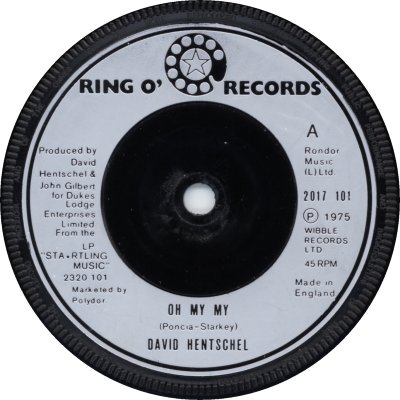
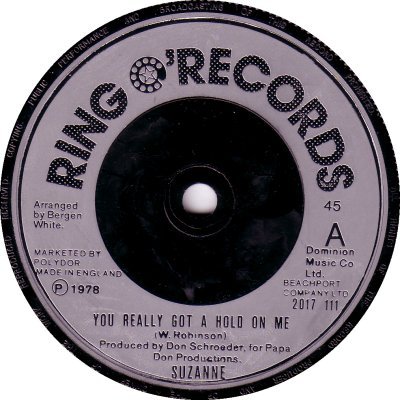
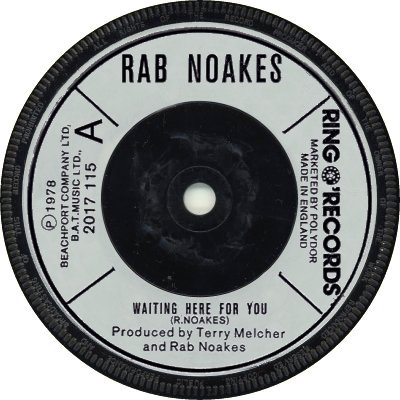
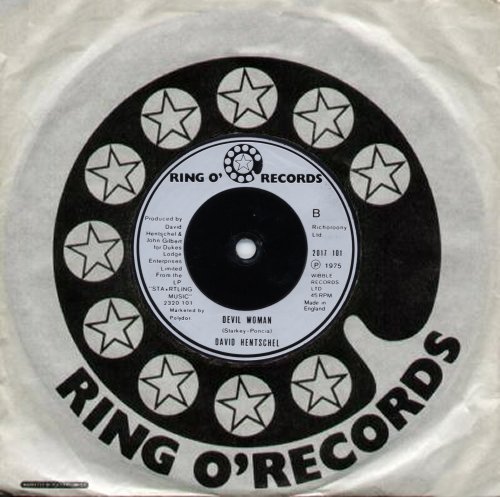
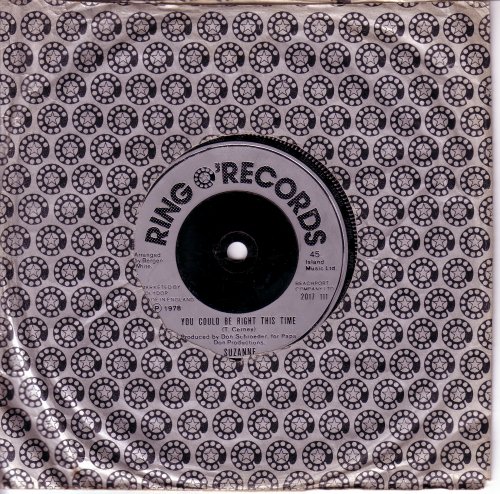
Ringo Starr's record label, though his involvement in the artistic side of it seems to have been limited. The first mention of Ring O' Records came in 'Music Week' of the 21st of September 1974, which stated that the ex-Beatle had formed the label through an agreement with Polydor. No product had been announced, and it wasn't certain when the launch would be: it might be by the end of the year or at the start of 1975. In 'Billboard' of the 5th of October, Polydor A&R manager Wayne Bickerton was quoted as saying that talks about the launch date were ongoing, and that the final decision would rest with Starr; 'later in the year' and 'January' were mentioned as possibles. There were 'no immediate plans' for Starr to record for the label himself, which is understandable as he was still under contract to Apple / EMI at the time. In the event Ring O's first releases - a single and LP by David Herschel - were announced in 'MW' of the 12th of April 1975. There was a six-month gap before appearance of the second single, 'Gimme The Key' b/w 'Honky Tonk' by Bobby Keys (2017-002; 9/75). Two more followed in November, but after those nothing more was heard from Ring O' for a year and a half. Starr himself signed to Polydor during that period, but his records were issued on the Polydor label.
Ring O' made a comeback in the summer of 1977. 'MW' was able to report that a new marketing and distribution deal had been signed with Polydor and that the label had been reactivated; according to Polydor's director of popular music, Mike Hayes, "After a slight false start last year" the company now had "a manager in whom we have the greatest confidence", which suggests that relations between the two concerns had been problematic. Singles began to be issued more frequently and albums by Graham Bonnet, John Taverner (a reissue of 'The Whale') and Rab Noakes were added to the catalogue. All was not well, however, and the company seems to have run out of impetus again; its final single came out in July 1978. 'MW' of the 23rd of September of that year said that Ring O's distribution deal with Polydor had run out at the end of August and had not been renewed; the company had adjusted its sights and was going to operate as a production company rather than a record label, under the name 'Able Label Productions', with Terry Condon as managing director. The article added that the artists currently on the books would be retained and would be placed with 'suitable companies', but that doesn't seem to have happened. A single by Dirk & Stig, 'Ging Gang Goolie' b/w ' Mister Sheene', which had been listed in 'The New Singles' for the 14th of July 1978 as 2017-109, came out instead on EMI as EMI-2852 on the 18th of August with a credit to the Able Label company, but that appears to have been the only fruit of the new arrangement.
Ring O' used three different label designs and two different company sleeves during its existence. The name and logo on the labels were small for the first four issues (1) and the company sleeve at that time had a single large logo on it (4). Singles issued after the revival had much larger name and logo (2) and a company sleeve with lots of small logos (4). The final Ring O' single (3) had a label which was similar in design to that used for EG (q.v.) at the time, and it came in a picture sleeve rather than a company one. Some fifteen singles were issued in this country, but it never tasted Chart success here; Graham Bonnet's 'Warm Ride' b/w '10/12 Observation' (POSP-002; 3/78) was however a big hit in Australia, albeit on the Mercury label. Had Starr been able to record for the label himself, it might perhaps have been more successful; that said, none of his own Polydor singles charted. Ring O' singles were mainly numbered in a 2017-100 series, it being Polydor's custom to use seven-figure numbers starting with '2'. As with all the labels in the Polydor group at that period, singles were injection moulded. The rarer Ring O' singles, such as those by Stormer, Colonel and Carl Groszman, are modestly collectable.
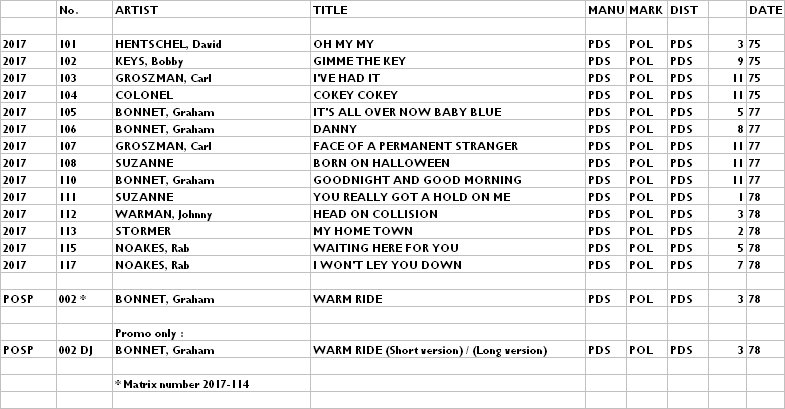


Copyright 2006 Robert Lyons.

